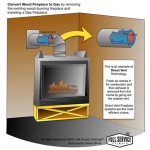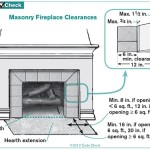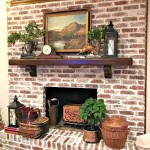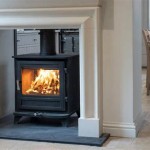Gas Fireplace Inserts in Connecticut: A Comprehensive Guide
Gas fireplace inserts represent a popular heating solution in Connecticut homes, offering a blend of aesthetics, efficiency, and convenience. These inserts are designed to fit directly into existing wood-burning fireplaces, transforming them into modern gas-fueled heat sources. This guide provides a comprehensive overview of gas fireplace inserts, focusing on the factors to consider when choosing, installing, and maintaining them within the Connecticut context. The information provided here aims to assist homeowners in making informed decisions about their heating needs and preferences.
Connecticut experiences distinct seasonal temperature variations, with cold winters that necessitate reliable and efficient heating systems. Gas fireplace inserts offer a viable alternative or supplement to central heating, providing localized warmth and contributing to energy conservation. They also address concerns related to wood-burning fireplaces, such as creosote buildup, smoke inhalation, and the labor-intensive process of procuring and storing firewood. The advantages of gas fireplace inserts extend beyond mere convenience, encompassing environmental and safety considerations.
Understanding the Benefits of Gas Fireplace Inserts
Gas fireplace inserts present numerous advantages over traditional wood-burning fireplaces and other heating options. These benefits contribute to their increasing popularity among Connecticut homeowners.
Efficiency: Gas fireplace inserts are significantly more efficient than traditional wood-burning fireplaces. Open fireplaces lose a substantial amount of heat up the chimney, whereas gas inserts are designed to retain and radiate heat into the room. Modern gas inserts often boast efficiency ratings exceeding 70%, and some models even reach over 80%. This improved efficiency translates to lower heating costs and reduced energy consumption.
Convenience: The convenience factor is a major draw for many homeowners. Gas fireplaces eliminate the need to chop, haul, and store firewood. They can be ignited with the push of a button or the flip of a switch, and many models come with remote controls for easy operation. This ease of use makes them an ideal choice for busy individuals and families who want the ambiance of a fireplace without the associated labor.
Cleanliness: Gas fireplaces burn cleaner than wood-burning fireplaces, producing significantly less smoke, soot, and ash. This reduces the need for frequent chimney cleaning and minimizes indoor air pollution. The cleaner burning process also contributes to a healthier living environment, particularly for individuals with respiratory sensitivities.
Safety: Gas fireplace inserts are generally safer than wood-burning fireplaces. They eliminate the risk of embers escaping and creating a fire hazard. Many models are equipped with safety features such as automatic shut-off valves and oxygen depletion sensors, which further enhance their safety profile. Furthermore, the controlled combustion process reduces the risk of carbon monoxide poisoning, a serious concern associated with malfunctioning or poorly ventilated wood-burning appliances.
Aesthetics: Gas fireplace inserts are available in a wide range of styles, finishes, and designs. They can complement any home décor, from traditional to contemporary. Many models feature realistic-looking logs and flames, creating a warm and inviting atmosphere. The aesthetic appeal of gas fireplace inserts enhances the overall ambiance of a room, making it a more comfortable and enjoyable space.
Key Considerations When Choosing a Gas Fireplace Insert in Connecticut
Selecting the right gas fireplace insert requires careful consideration of several factors. These factors include the size of the fireplace opening, the heating needs of the space, the desired aesthetic, and budget constraints. Thorough evaluation of these elements will ensure that the chosen insert meets the homeowner's specific requirements.
Size and Compatibility: The first step in choosing a gas fireplace insert is to measure the existing fireplace opening. The insert must be sized appropriately to fit snugly within the fireplace. Consult with a qualified professional to ensure proper fit and compatibility. Factors such as the flue size and chimney condition should also be assessed to ensure safe and efficient operation.
Heating Capacity: The heating capacity of a gas fireplace insert is measured in British Thermal Units (BTUs). The appropriate BTU rating will depend on the size of the room being heated and the level of insulation. A larger room or a poorly insulated space will require a higher BTU rating. Consider the primary purpose of the insert – whether it is intended to provide supplemental heat or to serve as the primary heat source for the room. Consulting with a heating professional can help determine the optimal BTU rating for specific needs.
Venting Options: Gas fireplace inserts require proper venting to exhaust combustion gases safely. There are two main types of venting options: direct vent and natural vent. Direct vent systems draw air from outside the home for combustion and exhaust gases directly outside through a sealed vent pipe. Natural vent systems use the existing chimney to exhaust gases. Direct vent systems are generally preferred for their safety and efficiency, but natural vent systems may be more suitable in certain situations. The choice of venting system will depend on the existing chimney configuration and local building codes.
Fuel Type: Gas fireplace inserts are available in two fuel types: natural gas and propane. Natural gas is typically less expensive than propane, but it requires a connection to a natural gas line. Propane is a portable fuel source that can be stored in tanks, making it a suitable option for homes without natural gas access. The choice of fuel type will depend on availability and cost considerations.
Style and Design: Gas fireplace inserts come in a wide variety of styles and designs to suit different aesthetic preferences. Options include traditional models with realistic-looking logs, contemporary models with sleek lines and glass fronts, and linear models with long, horizontal flames. Consider the overall décor of the room and choose an insert that complements the existing style. The aesthetic appeal of the insert is an important factor in creating a comfortable and inviting living space.
Features and Options: Modern gas fireplace inserts offer a range of features and options, such as remote controls, thermostats, blowers, and decorative fronts. Remote controls allow for convenient operation from a distance. Thermostats help maintain a consistent temperature. Blowers circulate warm air throughout the room, improving heating efficiency. Decorative fronts can enhance the aesthetic appeal of the insert. Carefully consider which features and options are most important and choose an insert that meets those needs.
Budget: The cost of a gas fireplace insert can vary significantly depending on the size, features, and brand. Set a budget before beginning the shopping process and stick to it. Remember to factor in the cost of installation, venting, and any necessary modifications to the existing fireplace. Obtain quotes from multiple installers to ensure a fair price.
Installation and Maintenance of Gas Fireplace Inserts in Connecticut
Proper installation and regular maintenance are crucial for ensuring the safe and efficient operation of gas fireplace inserts. Hiring a qualified professional for installation is highly recommended, as it involves working with gas lines and venting systems. Regular maintenance will help prolong the life of the insert and prevent potential problems.
Professional Installation: Gas fireplace insert installation should always be performed by a licensed and experienced professional. Improper installation can lead to gas leaks, carbon monoxide poisoning, and fire hazards. A professional installer will ensure that the insert is installed correctly, that the venting system is properly connected, and that all safety codes are met. They will also perform a thorough inspection of the installation to ensure that it is functioning properly.
Venting System Inspection: The venting system should be inspected annually for blockages, leaks, and corrosion. A clogged or damaged venting system can cause carbon monoxide to build up in the home. A professional chimney sweep can inspect and clean the venting system to ensure that it is in good working order. Regular cleaning will also remove any creosote buildup, which can be a fire hazard.
Burner Cleaning: The burner should be cleaned periodically to remove dust, debris, and carbon deposits. A clean burner will ensure efficient combustion and prevent soot buildup. Consult the manufacturer's instructions for specific cleaning recommendations. Use a soft brush or vacuum cleaner to remove any loose debris. Avoid using harsh chemicals or abrasive cleaners, as they can damage the burner.
Pilot Light Maintenance: The pilot light should be inspected regularly to ensure that it is burning properly. A weak or flickering pilot light may indicate a problem with the gas supply or the burner. If the pilot light goes out frequently, consult with a qualified technician. Never attempt to repair the pilot light yourself unless you are properly trained and equipped.
Log Placement: The logs should be arranged according to the manufacturer's instructions. Improper log placement can obstruct the burner and affect the flame pattern. Ensure that the logs are not blocking any vents or sensors. Refer to the owner’s manual for detailed instructions on log placement.
Professional Servicing: Schedule regular professional servicing for the gas fireplace insert. A qualified technician can inspect the insert for any potential problems, perform necessary repairs, and ensure that it is operating safely and efficiently. Annual servicing will help prolong the life of the insert and prevent costly repairs in the future.
Carbon Monoxide Detectors: Install carbon monoxide detectors in the home, especially near sleeping areas. Carbon monoxide is a colorless, odorless gas that can be deadly. Carbon monoxide detectors will alert you to the presence of carbon monoxide, allowing you to evacuate the home and seek medical attention. Test the detectors regularly to ensure that they are functioning properly.
By carefully considering these factors and following proper installation and maintenance procedures, Connecticut homeowners can enjoy the benefits of gas fireplace inserts for years to come. The combination of efficiency, convenience, and aesthetics makes them a valuable addition to any home.

Fireplace Inserts Wood Gas Pellet

Direct Vent Gas Fireplace Inserts Ct New England Patio Hearth
.jpg?strip=all)
Fireplaces Newtown Ct Wood Fairfield The Trading Post Llc

Propane Gas Fireplace Inserts Delivered Installed In Ct Works

Wood Stoves Pellet Gas Fireplace Inserts

Hearth Stove Fireplace Ord Ct The Cozy Flame

Fireplace Inserts Wood Gas Pellet

Enviro Gas Inserts Long Pond Hearth Home

Valor Legend G4 Gas Insert The Stove Place

Fireplaces Fairfield Ord Trumbull Shelton Westport Ct








